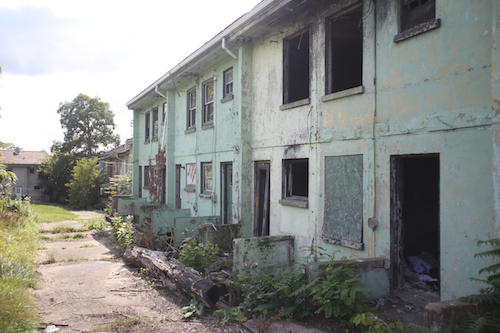Campbell blight demolition among most effective in the Valley

CAMPBELL
The neighborhood had changed.
Where once there were block parties and friendly neighbors stood the husks of former homes and overgrowth.
Maureen O‘Neil, a property specialist for the city, grew up on Alameda Avenue on Youngstown’s North Side, and recalled the obvious impact that vacant and abandoned homes had on her neighborhood.
That was 20 years ago.
Since then, O’Neil has worked as an activist and a government employee to help fight blight associated with vacant and abandoned houses.
Now working for Campbell, she is one of several administrators focusing on blight reduction as a means of improving the city.
Though the city does not have a budget for demolitions, Roger G. Smith, a director of planning, acquisitions and disposition at the Mahoning County Land Bank, said Campbell is behind only Youngstown in terms of blighted demolitions since 2015.
Since 2015, the city has demolished 39 houses through the land bank and a half-dozen more through private owners.
The city has managed to boost the number of demolished properties by dedicating an employee – O’Neil – specifically to the task.
When O’Neil becomes aware of a property that would be a candidate for demolition or has serious code violations – either by seeing the property herself or through a report by another city worker or a citizen – she first determines if the house is occupied or if the owner is alive.
If the house is abandoned, vacant, tax delinquent and blighted, O’Neil can pass the information off to the land bank. From there, the land bank can move to gain ownership of the house and – if it meets the previously mentioned criteria – can demolish the property.
If the owner is still alive, O’Neil will collect photos of the code violations on a property and send a letter to the owner informing them that they’re not in compliance.
If the property owners ignore the violation for 30 days, the law director, Brian Macala, can summon the owners for a prosecutor’s meeting.
“Nine out of 10 times, that meeting will clear up the issue,” Macala said. “A lot of times, they don’t realize how serious we take code enforcement until they’re here. But we’re not bringing anyone in for punishment, at least not initially. We’re looking for solutions.”
O’Neil emphasized that the city’s preference is to work with homeowners and develop time lines for bringing their homes into compliance that won’t result in undue financial duress.
“We don’t want to force anyone from their home or wreck anyone financially,” O’Neil said. “We’ll always work with homeowners.”
 43
43
